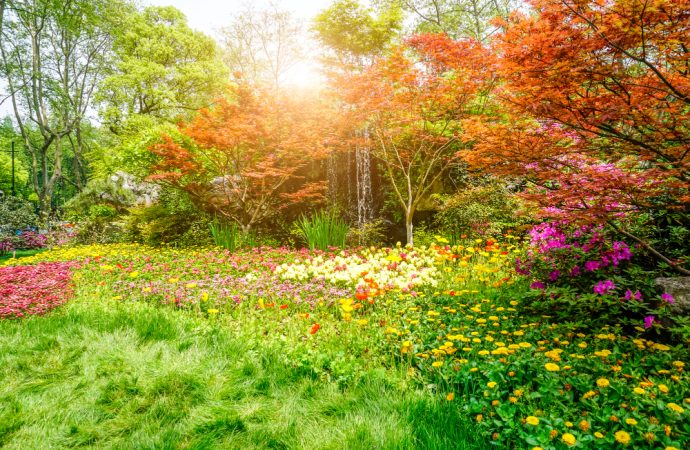Butterflies, with their vibrant colors and delicate wings, are a delightful sight that brings joy to any garden. These enchanting creatures play a crucial role in pollination and contribute to the overall biodiversity of our ecosystems. Unfortunately, habitat loss and climate change have led to a decline in butterfly populations worldwide. However, there are simple
Butterflies, with their vibrant colors and delicate wings, are a delightful sight that brings joy to any garden. These enchanting creatures play a crucial role in pollination and contribute to the overall biodiversity of our ecosystems. Unfortunately, habitat loss and climate change have led to a decline in butterfly populations worldwide. However, there are simple steps you can take to create a butterfly-friendly habitat in your own backyard. We have gathered tips from experts to help you transform your garden into a haven for these graceful flutterers.
- Choose Native Plants:
Native plants are a cornerstone of a butterfly-friendly habitat. They provide food sources in the form of nectar and serve as host plants for butterfly larvae. Research local butterfly species in your area and select plants that cater to their specific needs. For instance, milkweed is essential for the survival of monarch butterflies, as it is the only plant their caterpillars can feed on. By incorporating a variety of native plants, you can attract different butterfly species and support their entire life cycle.
- Create Sunlit Spaces:
Butterflies are ectothermic, meaning they rely on external heat sources to regulate their body temperature. Design your garden to include sunny spots where butterflies can bask and warm their wings. Consider planting nectar-rich flowers in open areas that receive ample sunlight throughout the day. Additionally, strategically placed rocks and flat stones can serve as resting spots for butterflies, allowing them to soak up the sun’s warmth.
- Provide Shelter and Water:
Butterflies seek shelter from strong winds and predators. Incorporate diverse vegetation, including shrubs, tall grasses, and trees, to create sheltered areas within your garden. These areas not only offer protection but also serve as roosting sites for butterflies during the night or cooler days.
Water is essential for butterflies, especially in hot and dry climates. Create shallow puddles or install a small water feature, such as a birdbath or a shallow dish with pebbles and water, to provide a water source. Ensure the water feature has a gentle slope or add a few stones to serve as perches for butterflies to rest while drinking.
- Avoid Pesticides:
Pesticides can be harmful to butterflies and other beneficial insects. Avoid using chemical pesticides in your garden, as they can disrupt the delicate ecological balance. Instead, opt for natural pest control methods like companion planting, handpicking pests, or introducing beneficial insects that prey on garden pests. By maintaining a pesticide-free environment, you create a safe space for butterflies to thrive.
- Practice Sustainable Gardening:
Adopt sustainable gardening practices to create a healthy and thriving habitat for butterflies. Mulch your garden beds to conserve moisture, suppress weeds, and provide insulation for overwintering butterfly pupae. Use organic fertilizers and compost to nourish your plants without introducing harmful chemicals into the ecosystem. Minimize water usage through efficient watering techniques like drip irrigation and rainwater harvesting.
- Embrace Biodiversity:
A diverse range of plant species attracts a variety of butterflies. Plant a mixture of flowers with different shapes, colors, and blooming seasons to cater to various butterfly species. This diversity ensures a continuous food supply throughout the year and provides an attractive environment for butterflies to visit and inhabit.
- Spread the Word:
Share your knowledge and enthusiasm for creating butterfly-friendly habitats with your community. Encourage neighbors and friends to join in the effort to support butterfly populations. Collaborate with local schools, gardening clubs, and conservation organizations to organize workshops, community plantings, and educational programs. Together, we can create a network of butterfly-friendly spaces that promote conservation and awareness.

















Leave a Comment
Your email address will not be published. Required fields are marked with *